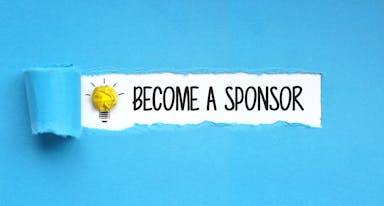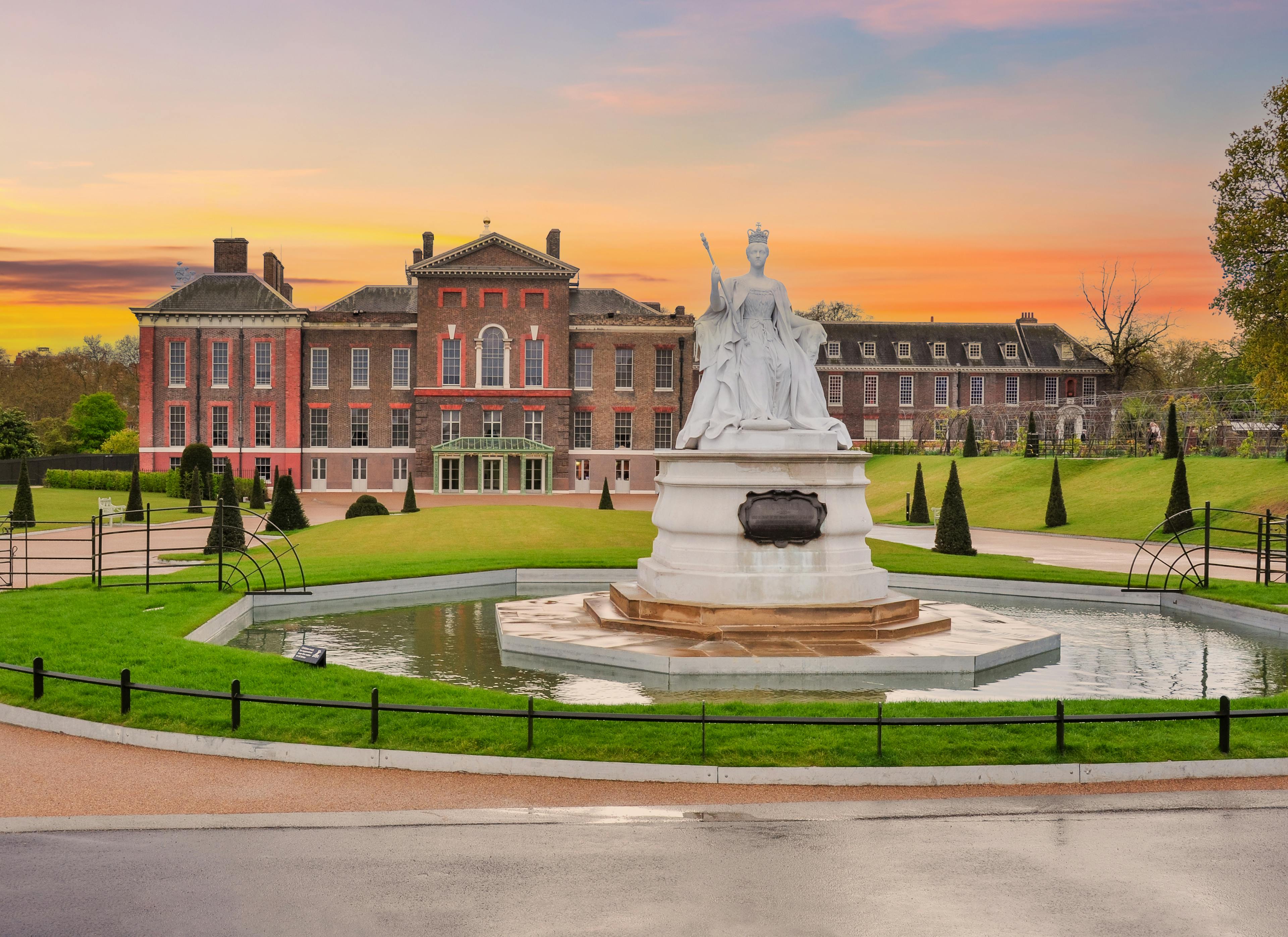Welcome
After our month in Paris, this week we will resume normal programming!
Our theme for September is Palaces.
This week we will start with Kensington Palace.
Hope you enjoy Traveling Through History with me again this week.
Michelle
Savvy Travel Historian
September Theme: Palaces
Kensington Palace
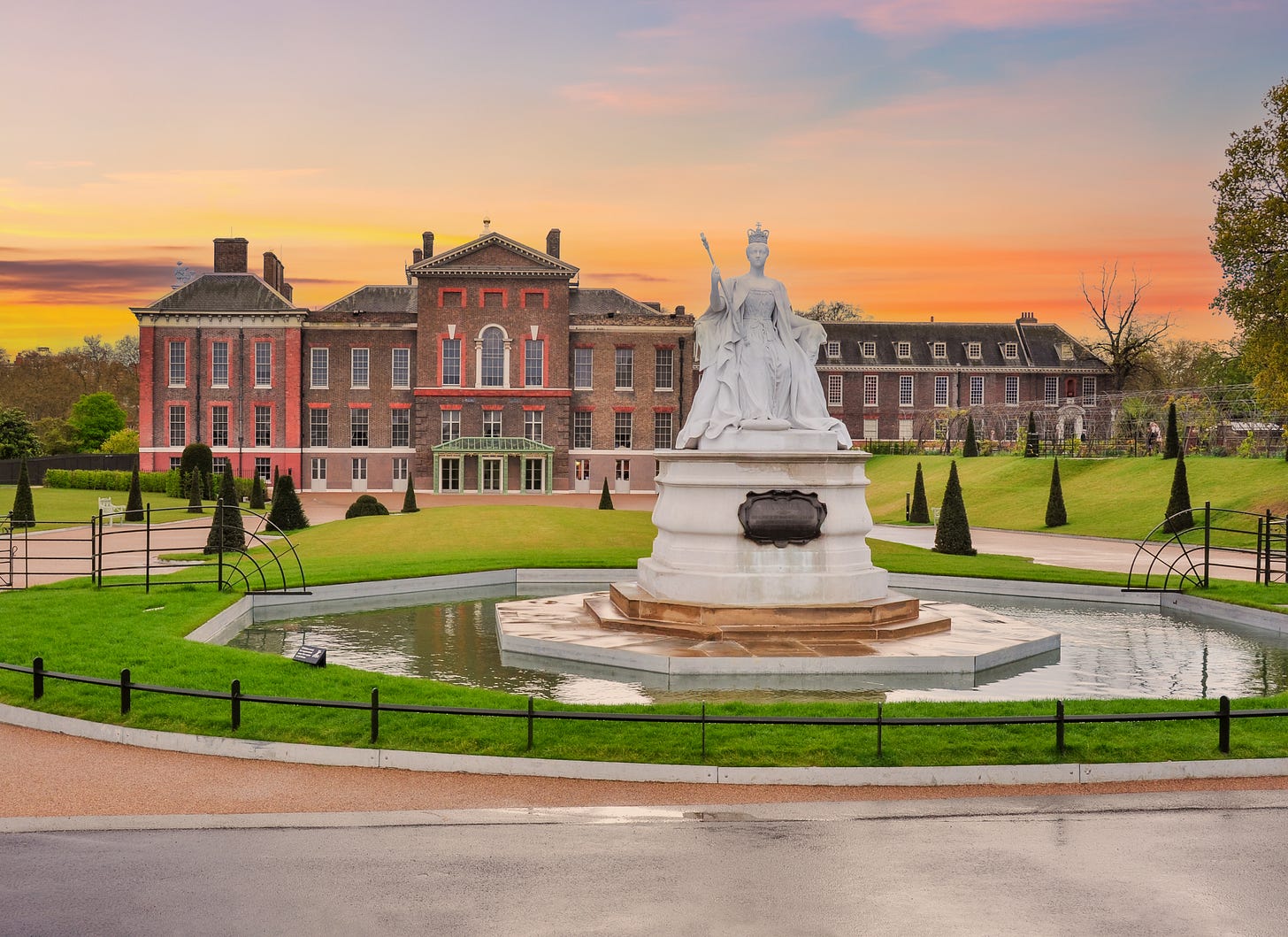
Background
The palace started its life as Nottingham House having been built as a two-story mansion by Sir George Coppin in 1605, it was then known as the village of Kensington and was frequently used by Londoners to ‘escape’ from the fog, floods and general unpleasantness that a major city like London had in those days.
Kensington Palace is located in the Royal Borough of Kensington & Chelsea in London.
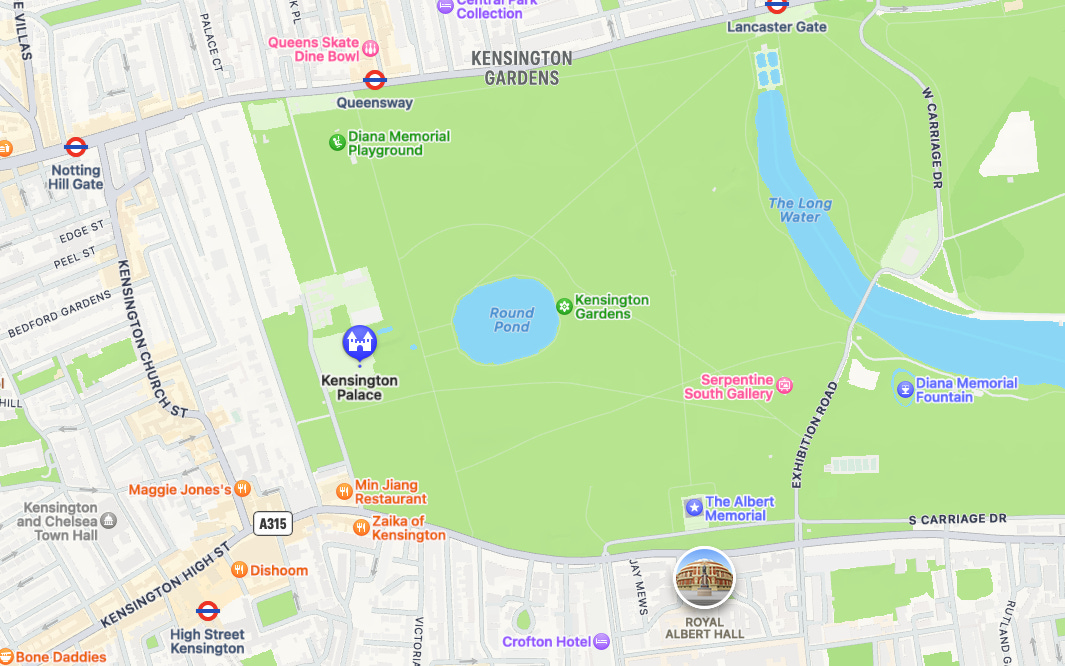
History
In 1689, King William III and Queen Mary II were looking for a country property to escape Whitehall Palace as the king was in fragile health. They purchased Nottingham House for £20,000 and asked Christopher Wren to expand the house for them.
The South End extension was completed swiftly and within five months the royal family celebrating Christmas there in 1689.
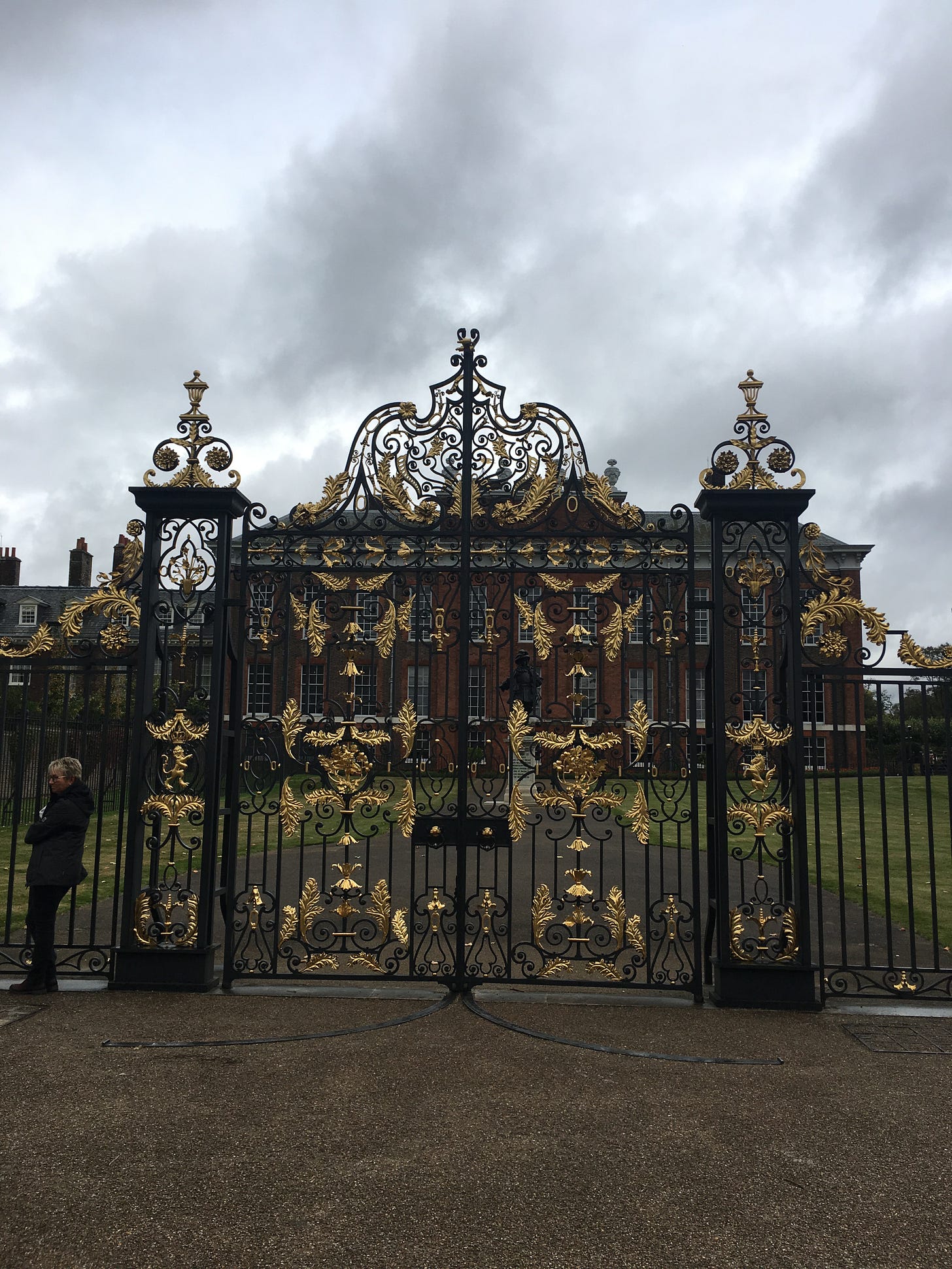
To keep costs down Wren kept the original structure and added a three-story pavilion to each of the four corners. He also reoriented the house to face west and entry was through an archway that had a clock tower on the top.
Situated west of Hyde Park, the area surrounding what became known as ‘Kensington House’ (now palace) was planted with stately gardens and flower beds.
Queen’s Apartments
When you visit today, you enter via the Queen staircase, which takes you to the Queen's gallery. Shortly after moving in Queen Mary added the Queen's gallery (1690 to 91), measuring 25.6 metres long.
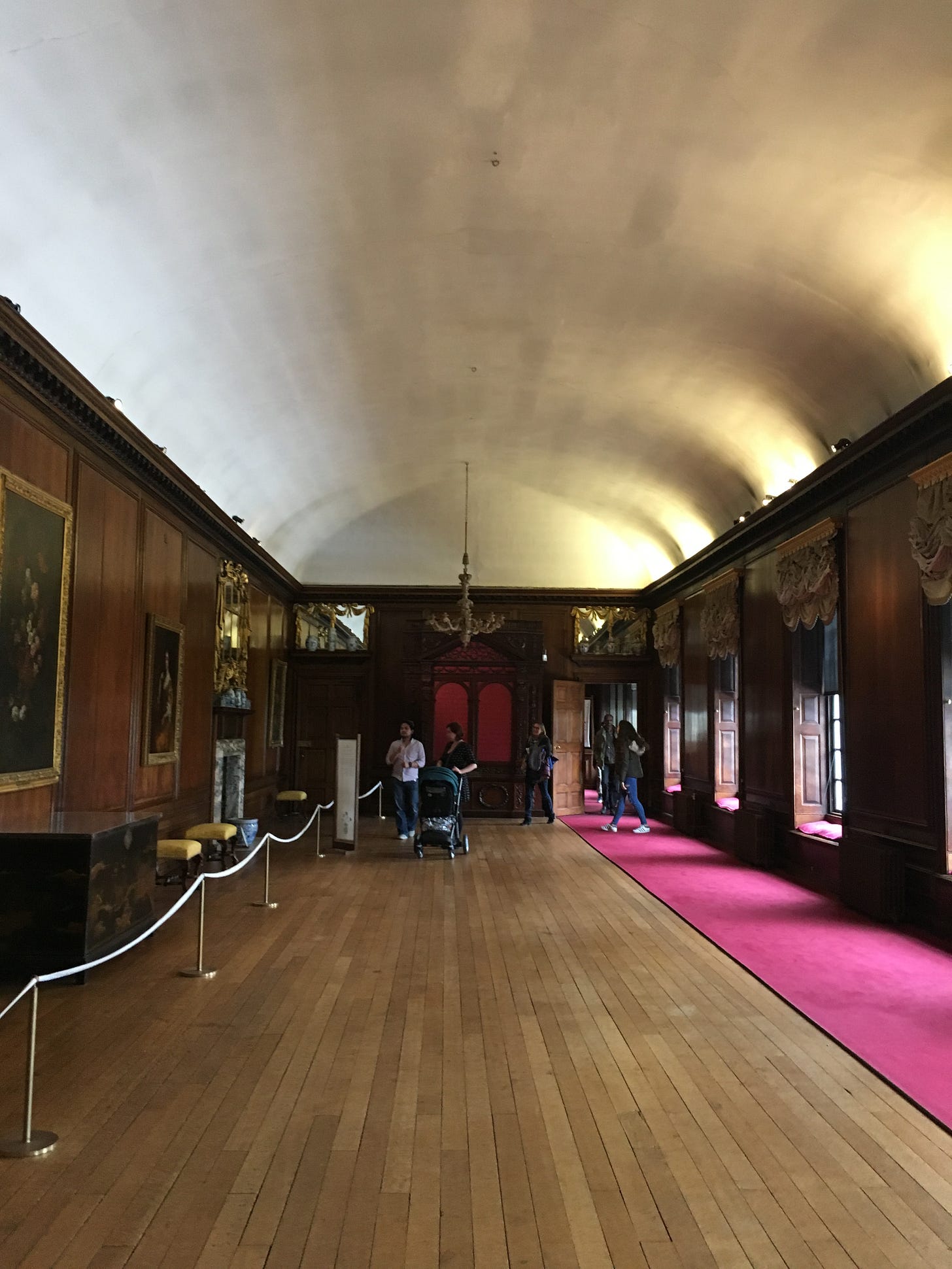
In this room, the Queen and her attendants would have embroidered and played with her dogs and birds.
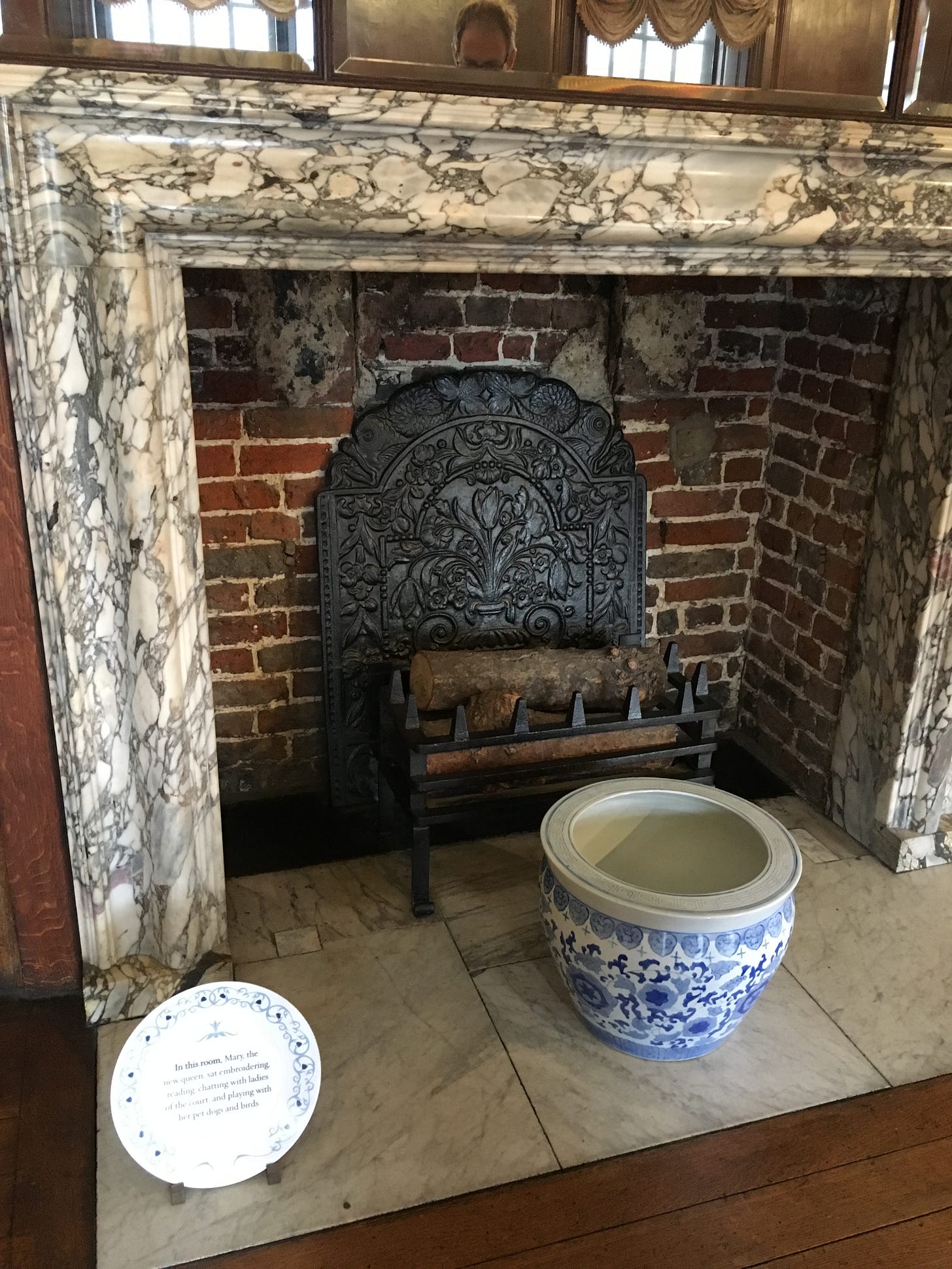
Queen Anne’s Throne Canopy
Following a three-year restoration project, Queen Anne’s throne canopy was reinstalled in the Presence Chamber five years ago.
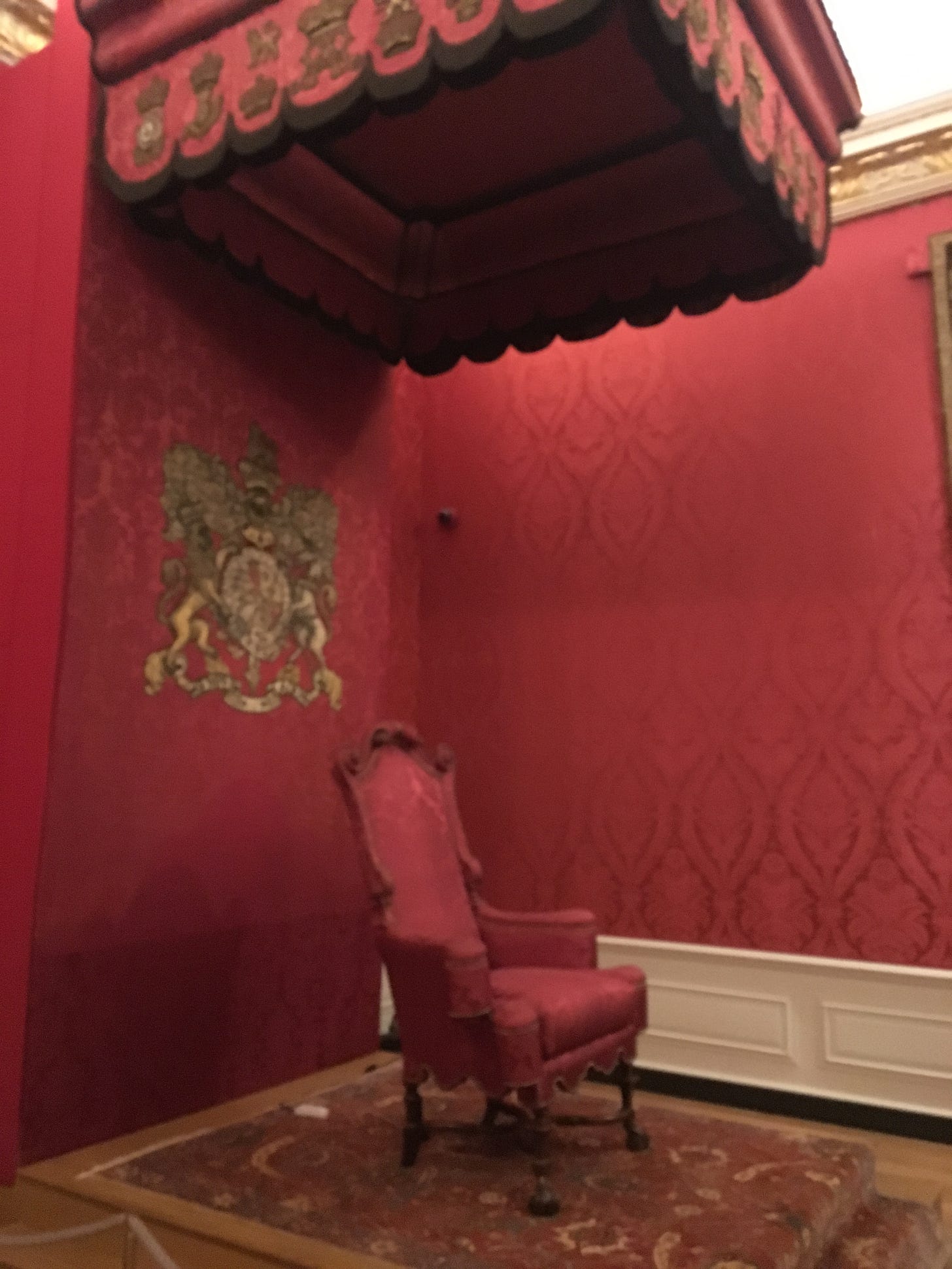
This fascinating video shows how the conservation team did the installation.
Queen’s Bedroom
The bed displayed in the Queen’s bedroom is thought to be from St James’ Palace and the bed used during the birth of Mary and Anne’s Catholic half-brother James Edward Stuart. He was thought to be such a threat to the Protestant establishment that it was rumoured he was a replacement child, smuggled die, as the real baby was stillborn.
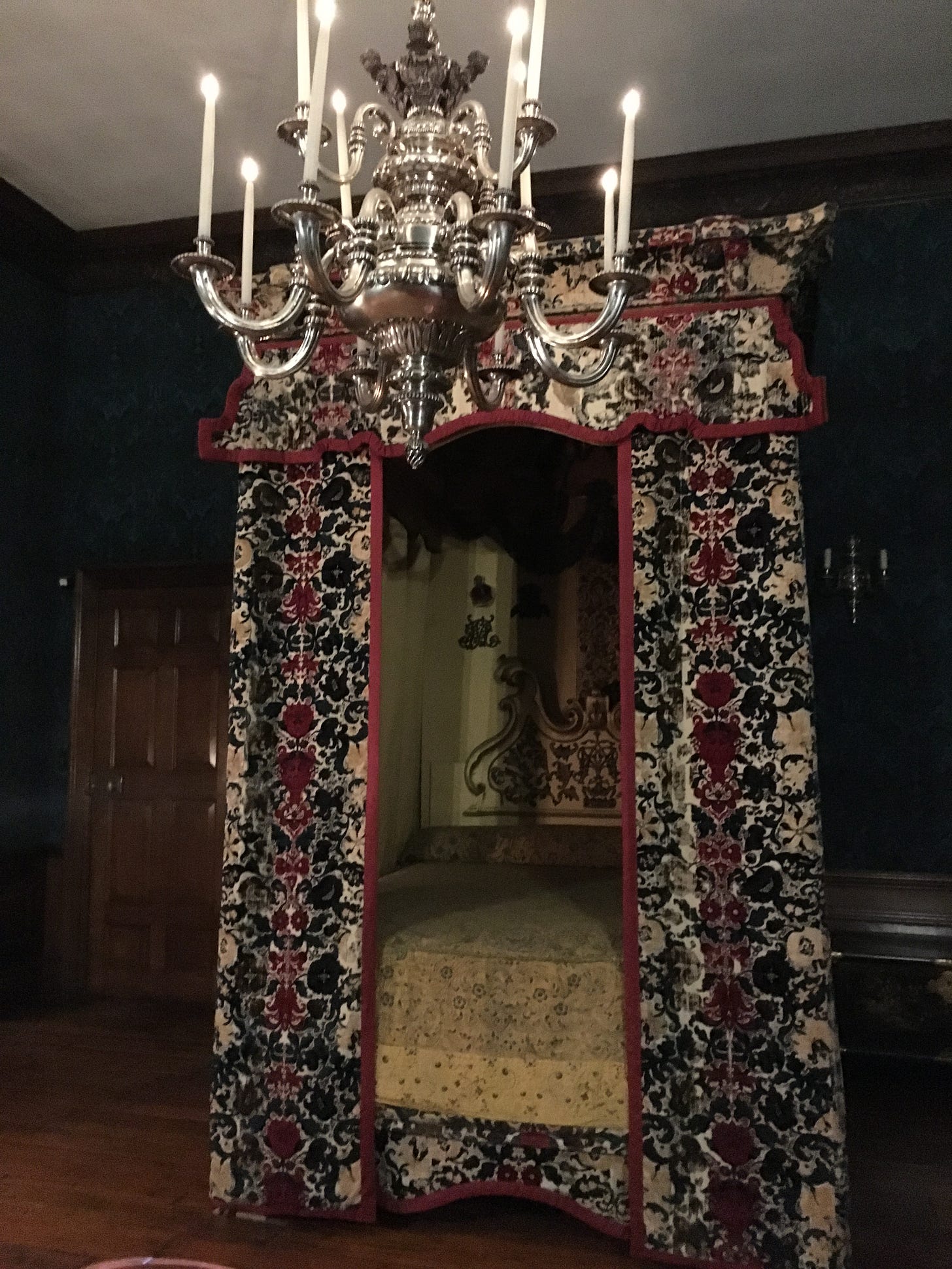
The King’s Apartments
After a fire in 1691, the king's staircase, which leads to his apartments, was rebuilt in marble. The walls were painted by William Kent to depict the lively 18thC court of George I.
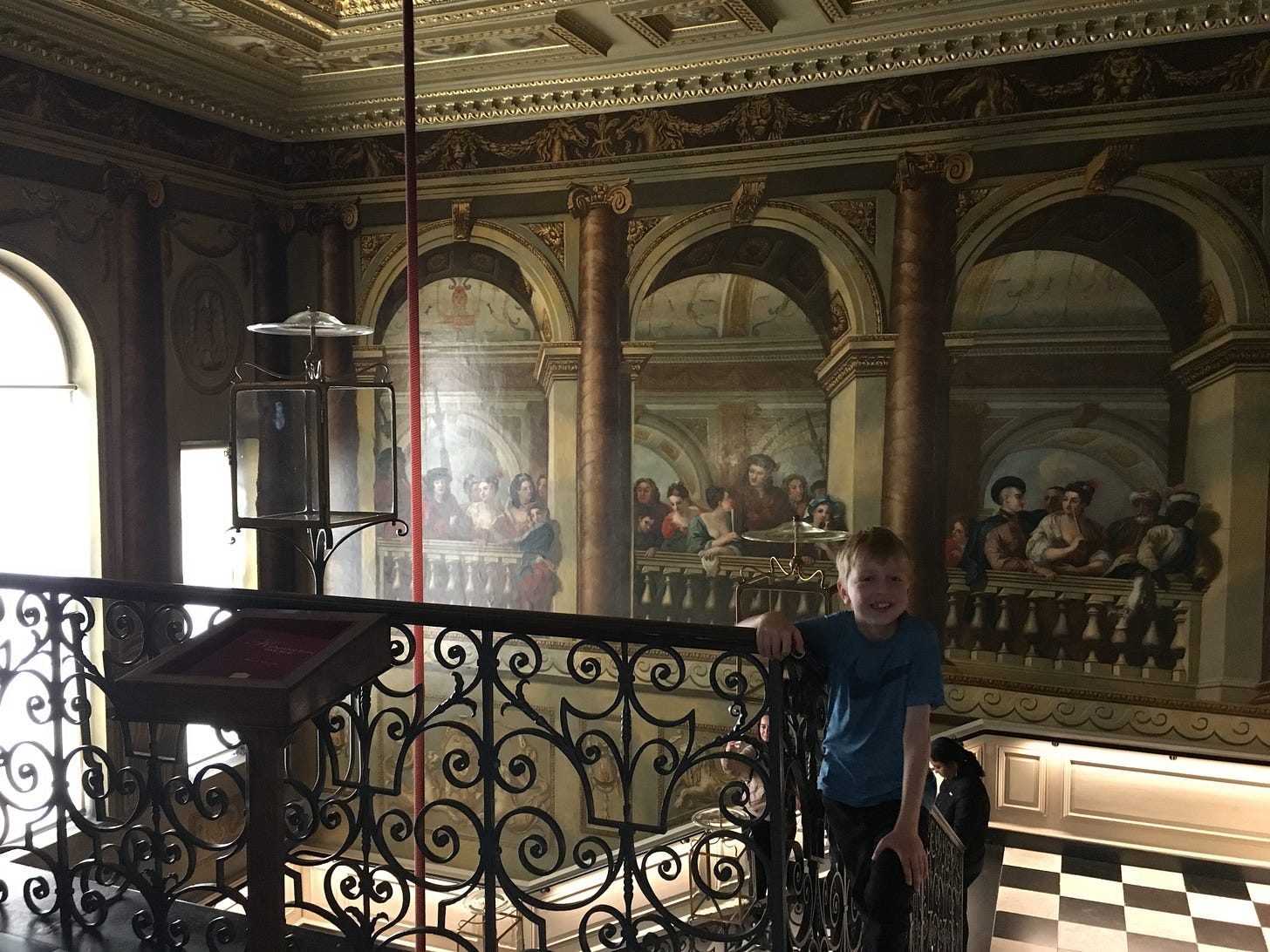
The South Front included the Kings gallery was added in 1695 and was where he displayed some of his extensive painting collection.
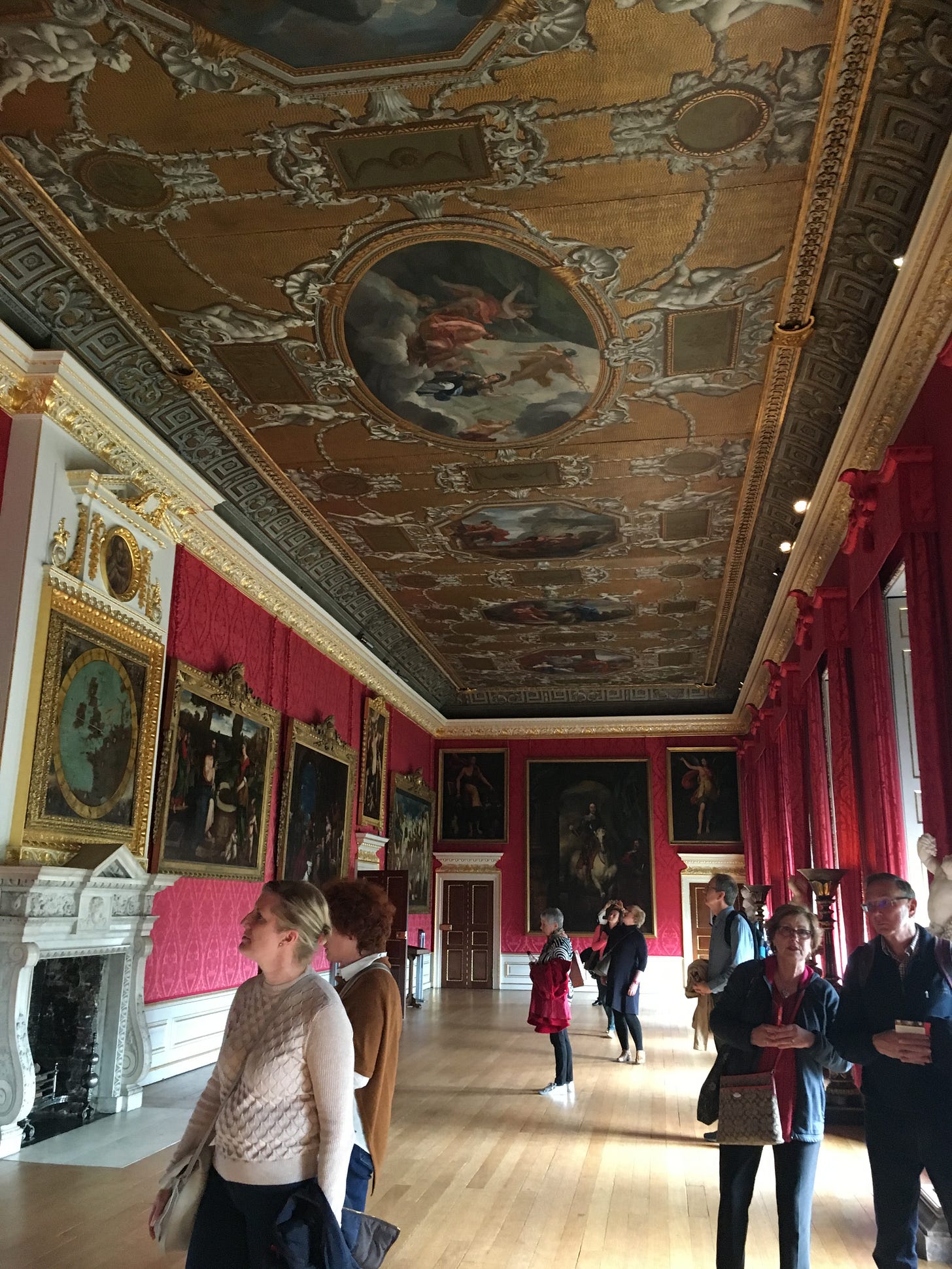
In 1694, Queen Mary died of smallpox in the palace and in 1702 after falling off of his horse at Hampton Court Palace, William was taken to Kensington Palace where he contracted pneumonia and died.
After the ascension of Queen Anne, she set about completing the extension plans that William and Mary started mainly around the Queen's apartments and entrance, but her biggest contribution to the palace’s development was in the gardens.
In 1704 the delightful Orangery was added to protect the Queen’s citrus trees from the frosty English winters. It is now a lovely tearoom and restaurant.
https://www.hrp.org.uk/kensington-palace/visit/eating/
Future monarchs, including George I & II lived at the palace but it was only George I who did any remodelling of the building (the king’s staircase as previously mentioned) and George II and Queen Caroline made extensive additions to the gardens.
When Caroline died, George neglected many of the inside rooms and they fell into disrepair.
He was the last monarch to live at Kensington and from then on the palace was only used for what we now call ‘minor royalty’.
Queen Victoria would be born there, along with the future Queen Mary (married to Edward VII) and grandmother to her late majesty Queen Elizabeth II and many relations moved into the building so much so that King Edward VIII (who abdicated), called it ‘the aunt heap”.
Princess Margaret resided there, along with Diana and it is currently the London base of the Prince and Princess of Wales, the Duke & Duchess of Kent, Gloucester, and Prince & Princess Michael of Kent have all live there since their respective marriages.
Queen Victoria’s association with the Palace
Queen Victoria was born in Kensington Palace on May 24, 1819.
The ‘Victoria: A Royal Childhood’ permanent exhibition, contains several rooms, including the room in which she was born and other significant items from her life in the palace.
She was an avid diary writer and a collection of some of her writings tools are included.
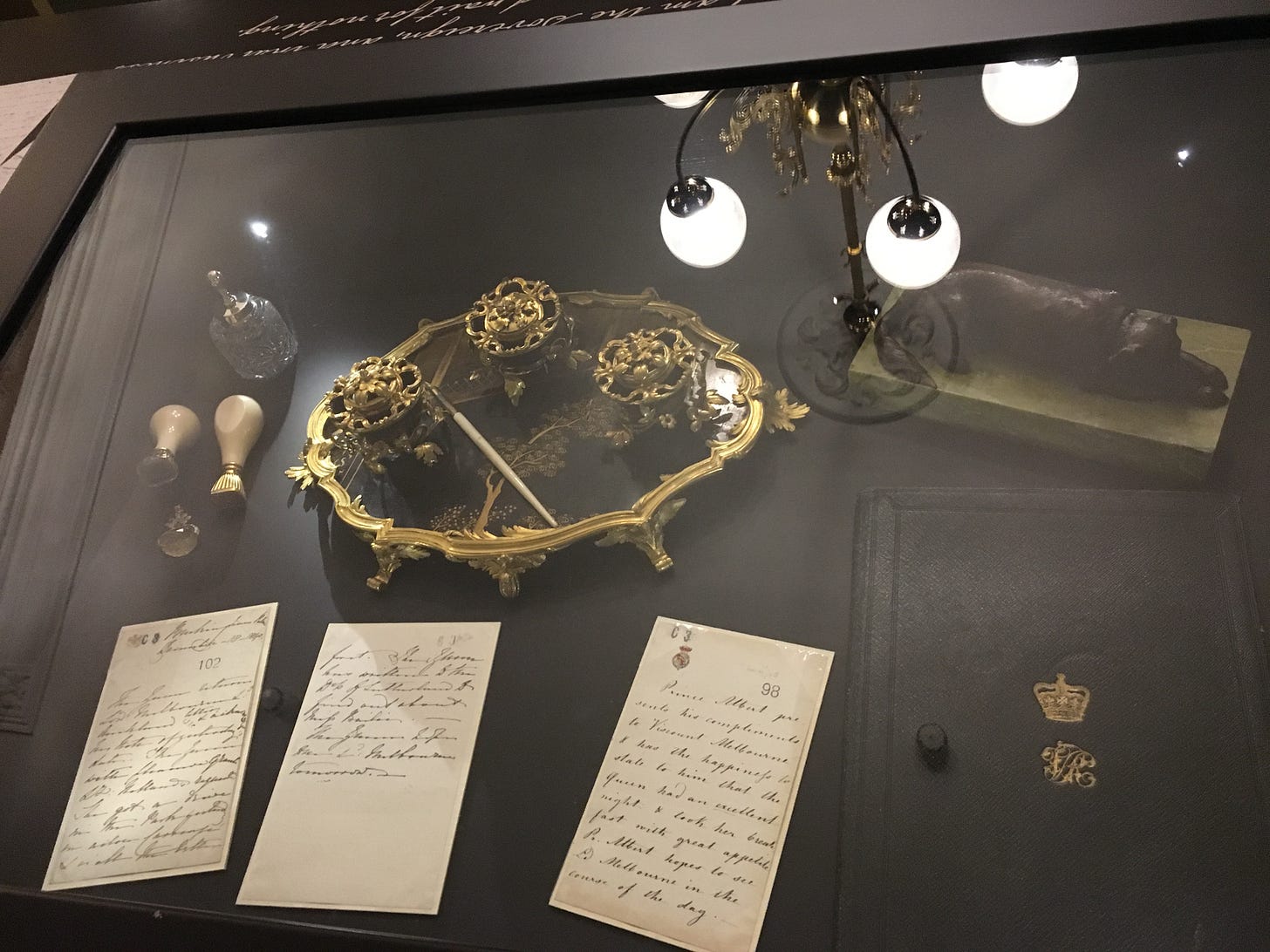
Other items on display include a baby cradle.
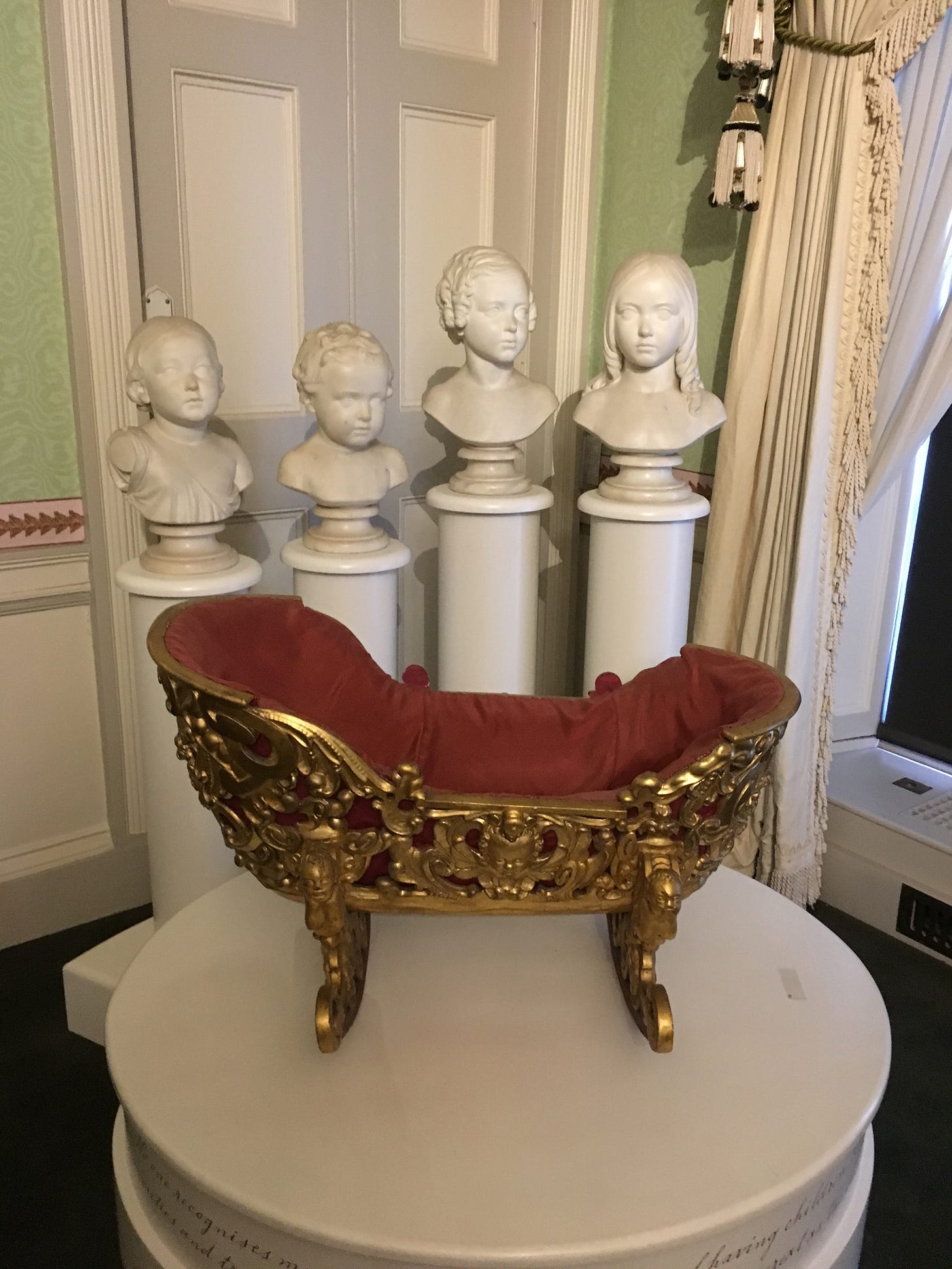
Victoria’s dolls house
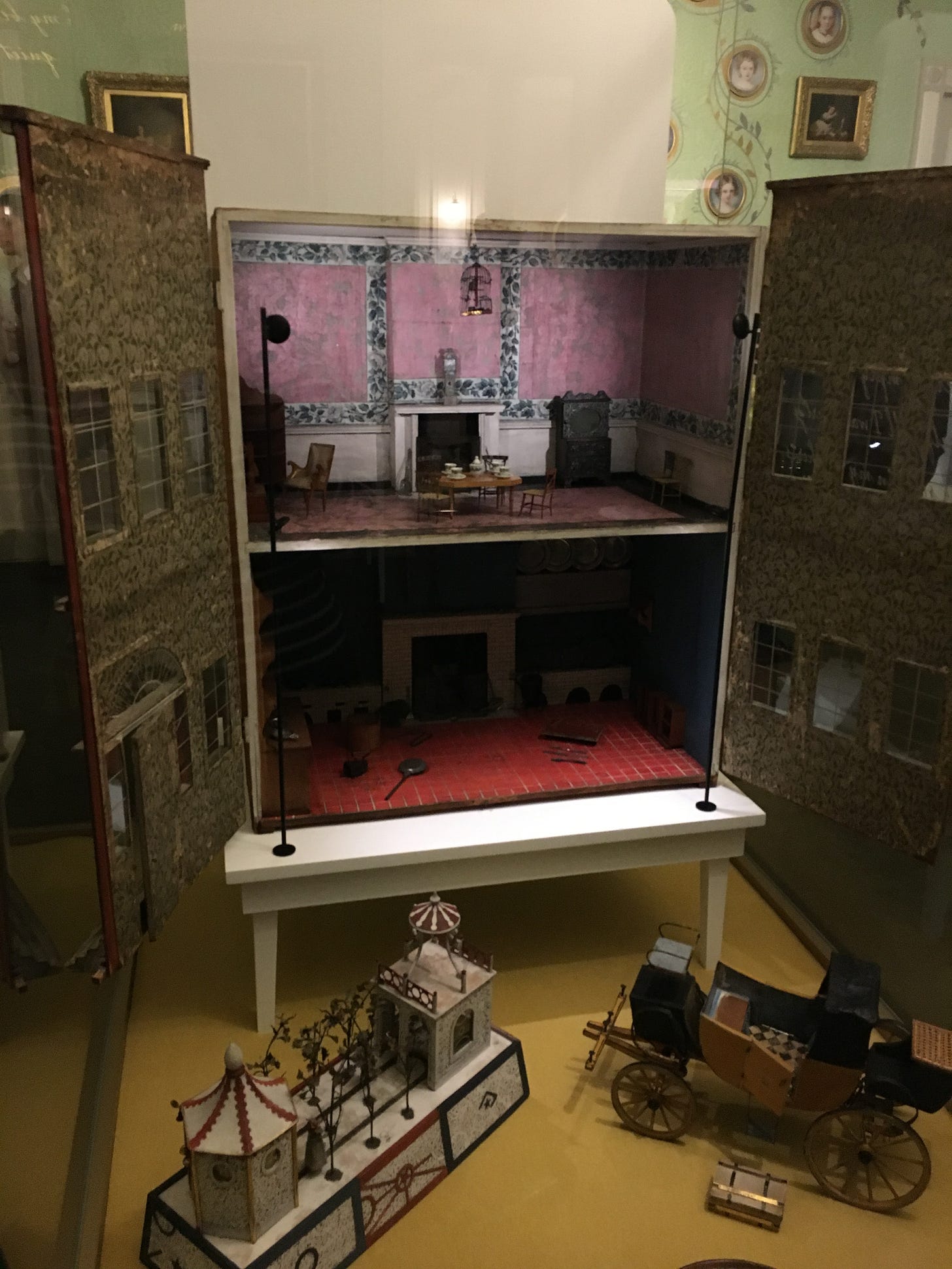
And the nightie and dressing gown she was wearing when first told she had become Queen.
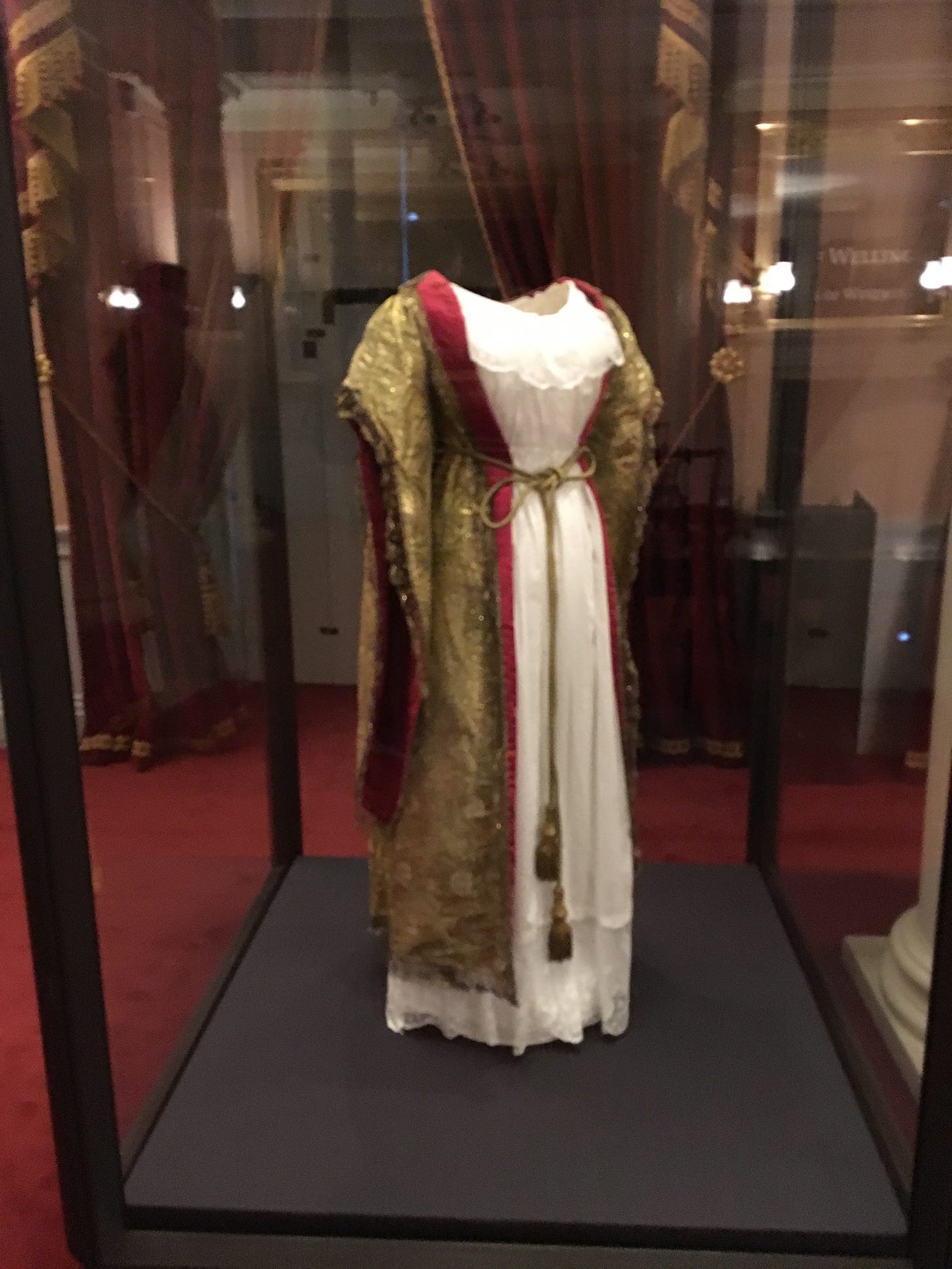
This video gives further information of the items on display around Victoria’s first day as Queen.
The Gardens
The gardens are extensive, and the wider park includes the Diana, Princess of Wales Memorial Fountain and the Albert Memorial.
In June 2000, a playground was opened in her memory.
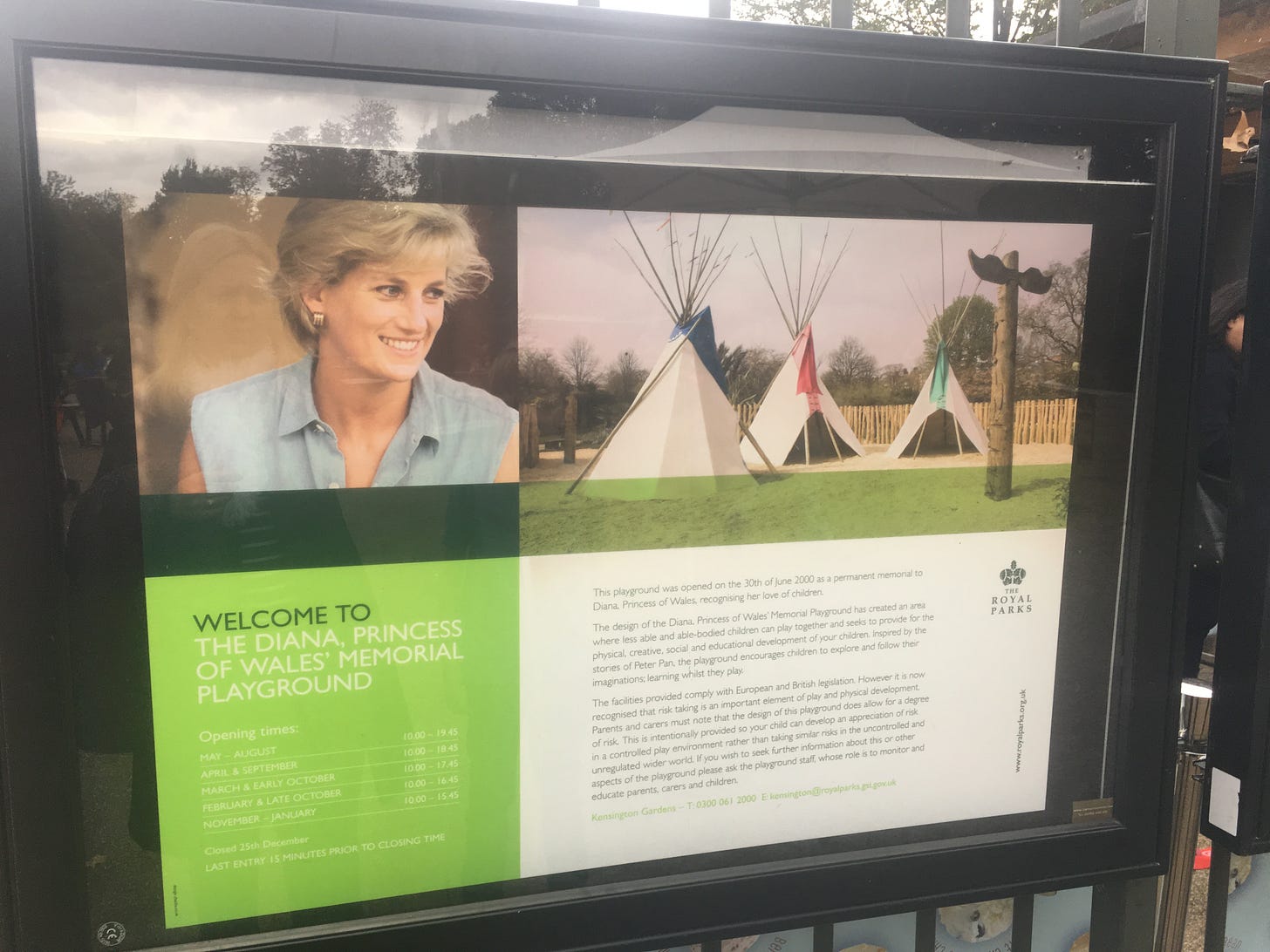
The Sunken Garden is that dedicated to Diana and is where Princes William and Harry unveiled a memorial statue to her in 2021.
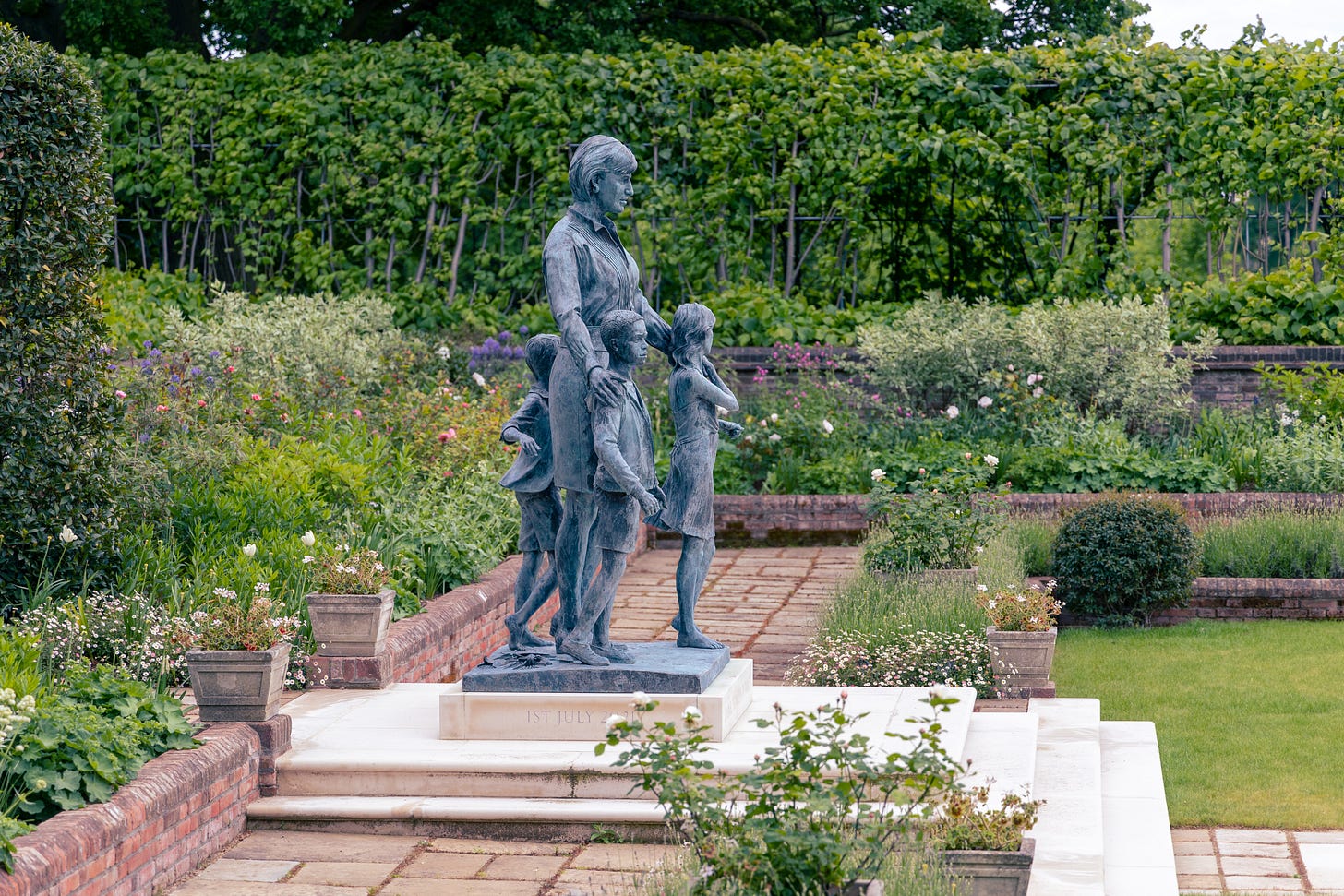
The White Garden was created with inspiration from Diana’s love of many of the flowers included plus to coincide with an exhibition on her to mark the 20th Anniversary of her death.
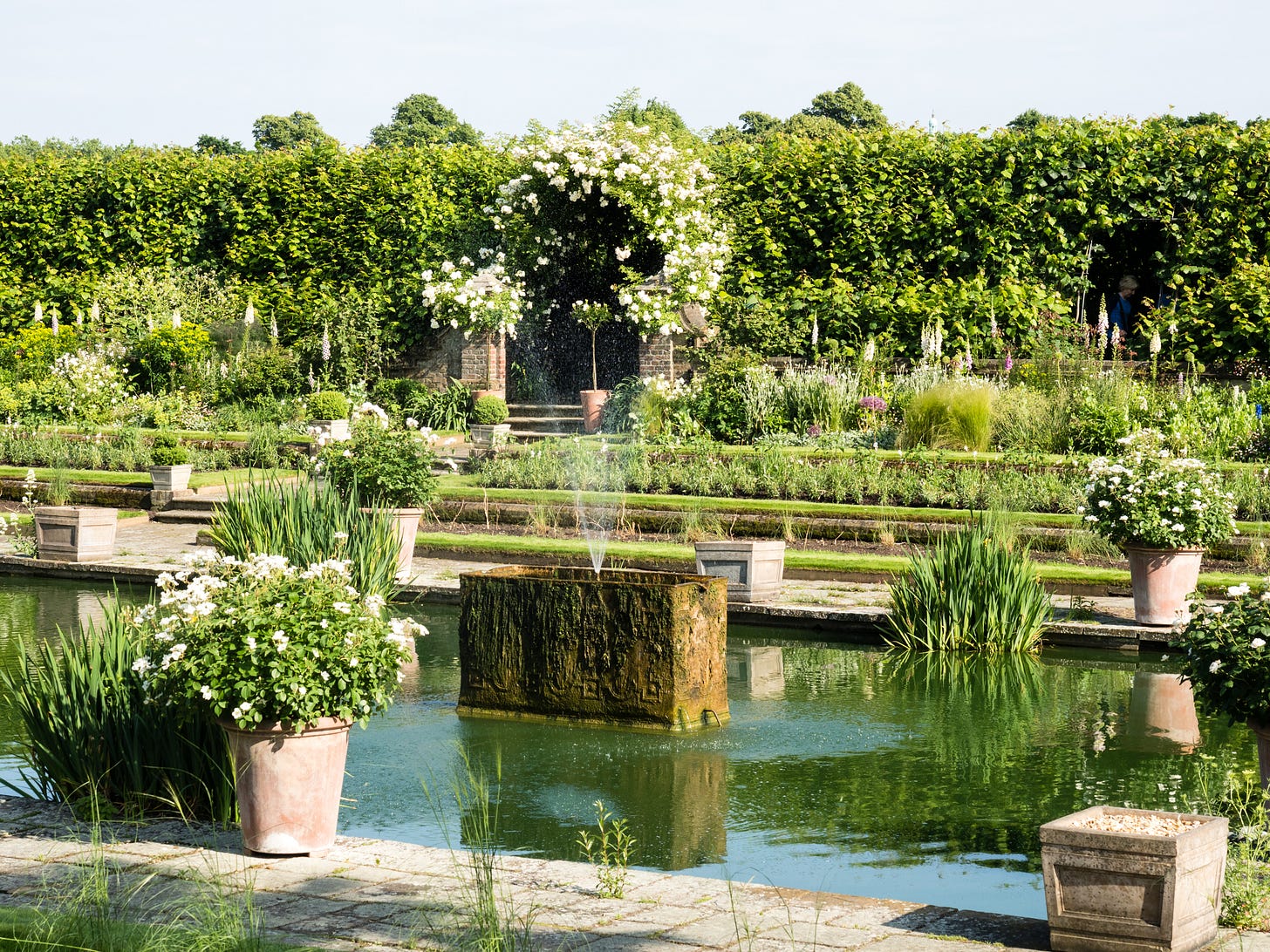
Relevant Travel Information:
The Palace often runs special exhibitions and can sometimes be closed during the changeover times, so best to check their website and book tickets in advance.
https://www.hrp.org.uk/kensington-palace/#gs.5how56
Tickets
https://www.hrp.org.uk/kensington-palace/visit/tickets-and-prices/#gs.5hoxcr
Museum Corner
Keeping with our Kensington Palace theme, the National Portrait Gallery in London has this mixed method engraving of Queen Victoria’s Coronation on June 28, 1838.
It was produced in 1842 by three men, Henry Bryan Hall, a printmaker, Sir George Hayter, a portrait painter and Henry Thomas Ryall an engraver.
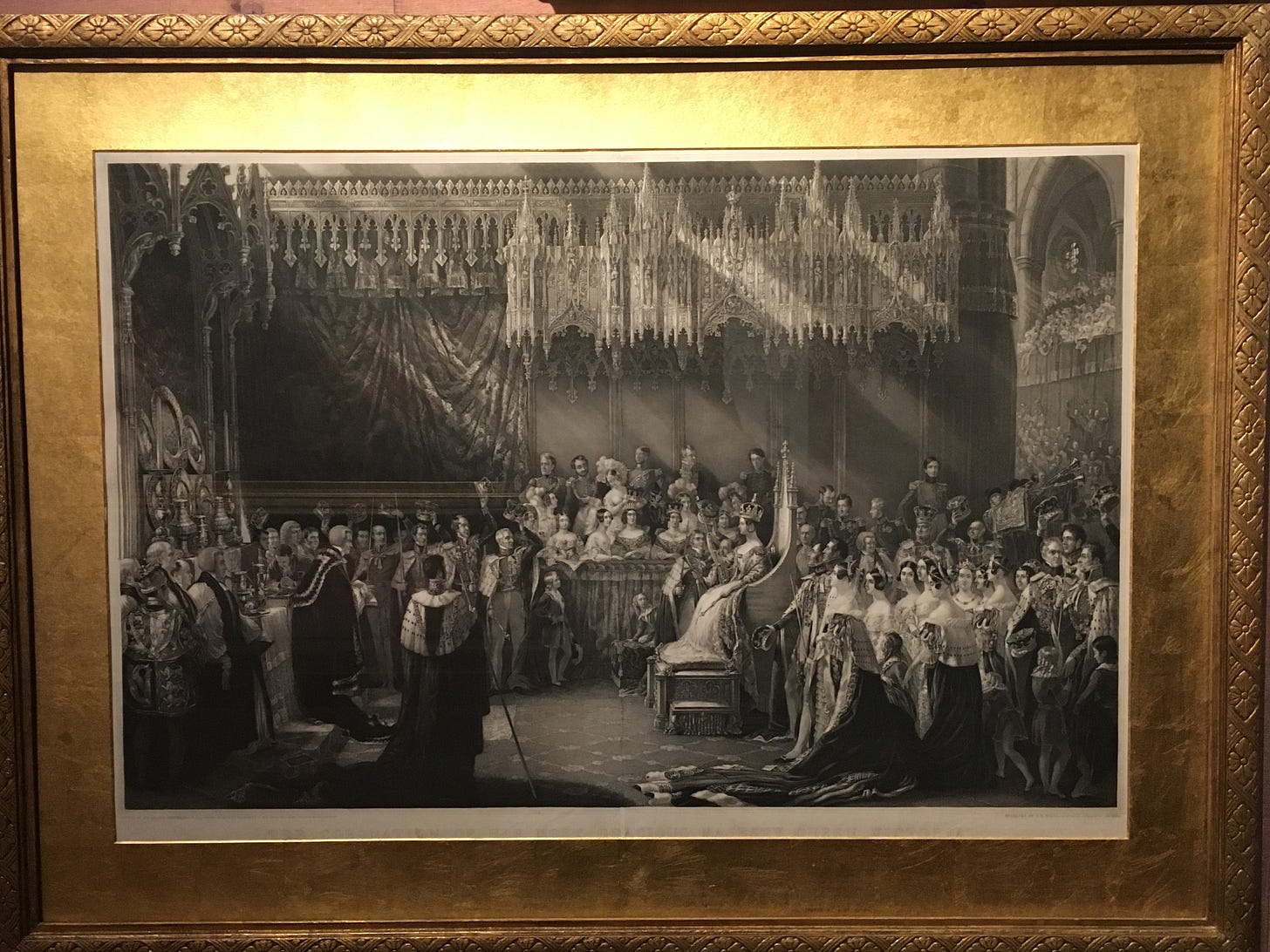
Out & About
If you get off at Green Park Tube Station in London, you can take a short stroll to Bond Street. The most expensive ‘green’ property on the Monopoly board, Bond Street, is a couple of minutes’ walk away.
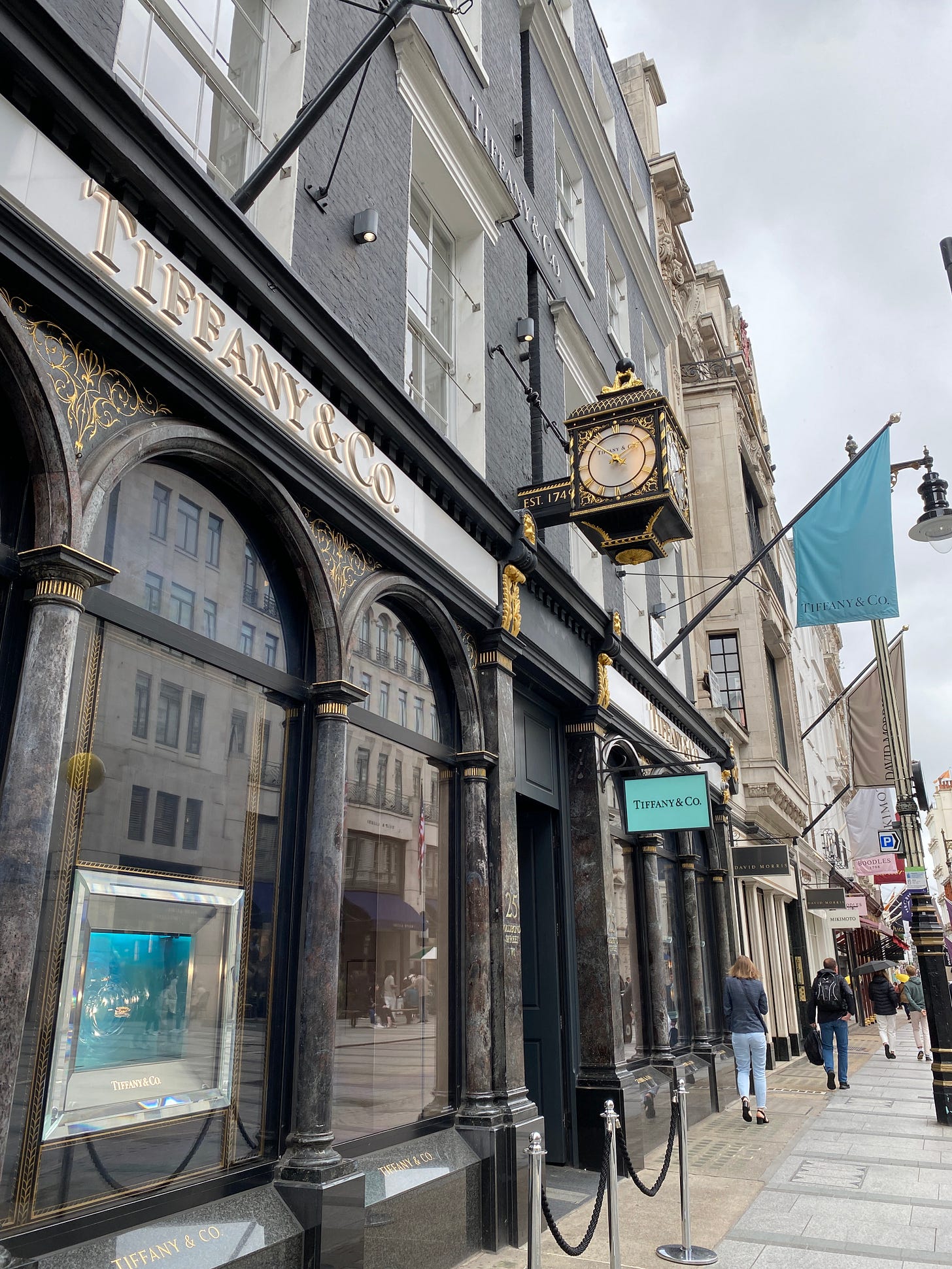
As you wonder past the shops of some of the most expensive and iconic brands in retail, you will come across the Tiffany’s store.
Tiffany & Co exited London (and Paris) in 1940 due to WWII, but in 1989 they returned to Bond Street.
Bond street is the only one that runs from Oxford Street to Piccadilly Street and although referred to generally as only ‘Bond’ is comprised of Old Bond Street and New Bond Street.
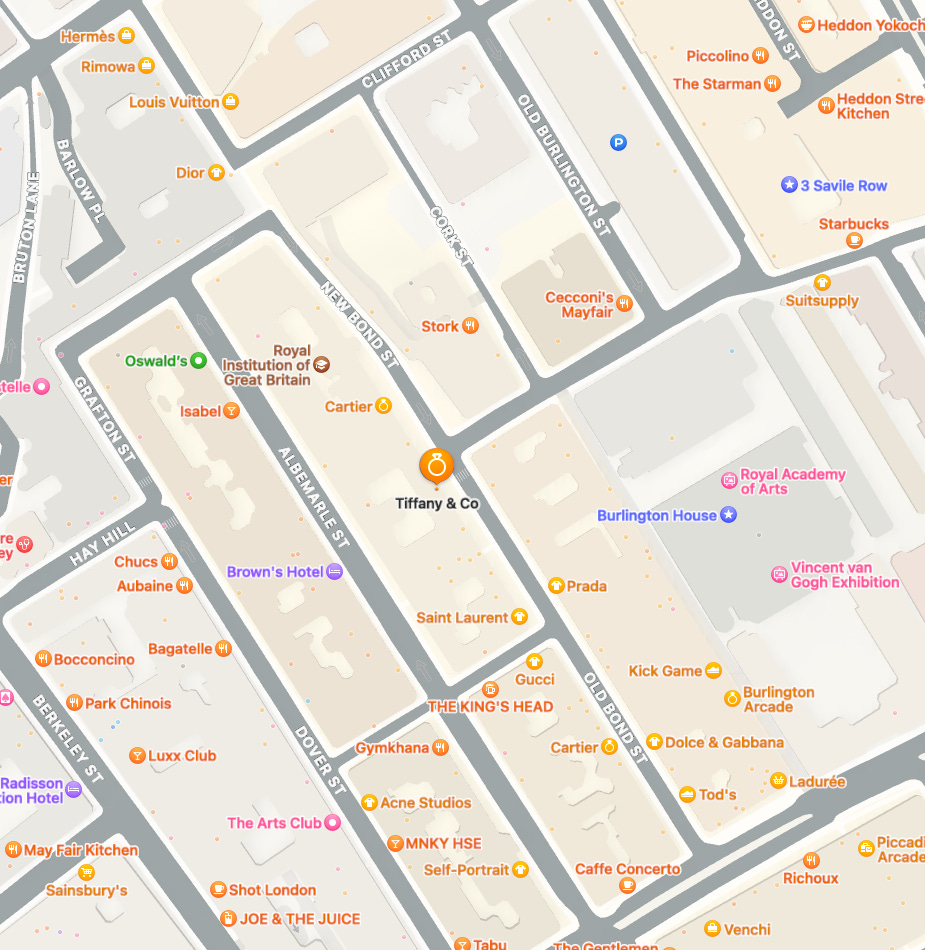

Michelle is a speaker, author, content marketer, historian and mother of 3 boys.
After 25 years in business and as the ‘Content Marketing Queen’ for the past 12 years, she has helped countless small businesses understand and develop their content strategies and focus on a customer first approach.
Savvy Travel Historian is her passion project, and her weekly newsletter is available on Substack, Paragraph and Mirror. The latter two allows you to collect each Issue as an NFT.
Michelle is co-host of the Web3 By Three Podcast, a weekly show which talks about current stories in the Web3 space and how it applies to B2B marketing, sales and operations. The show is recorded live every Wednesday at 4pm EST/ 9pm UTC on LinkedIn, YouTube & Bolt+.
You can follow Michelle in these places:
Savvy Travel Historian Instagram
